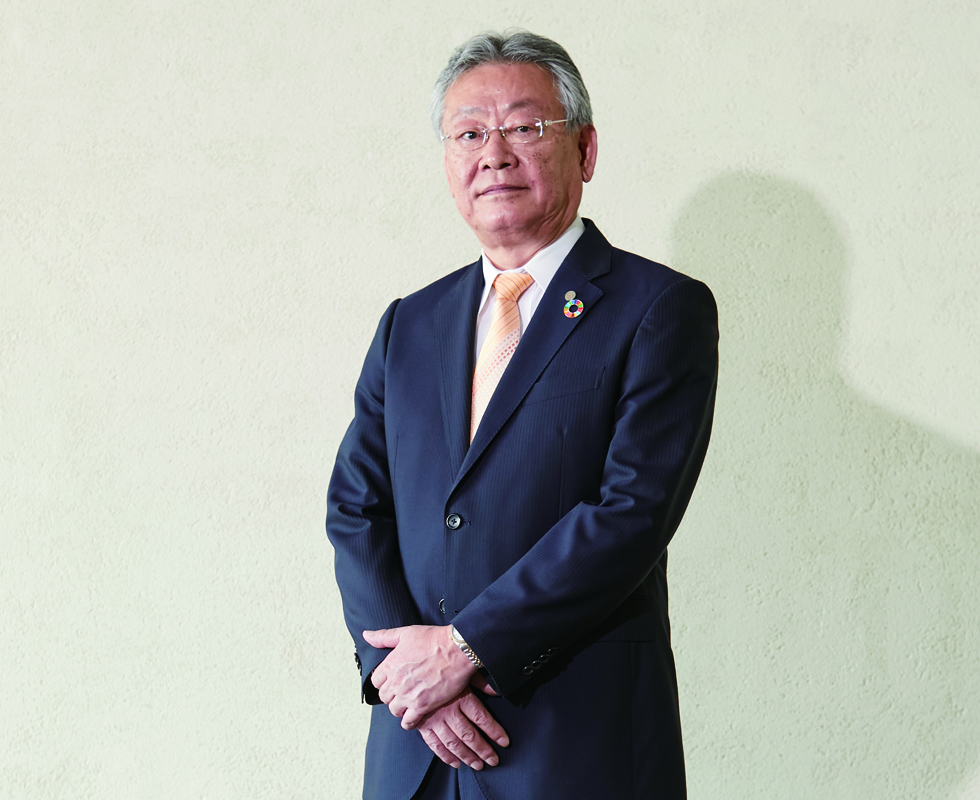We will establish
a stable financial base and
increase our enterprise
value continuously.
Chief Financial Officer (CFO)
HARIGAE Tomonori
Record-high Income in the Fiscal Year Ended
January 31, 2024
In the fiscal year ended January 31, 2024, growing demand in
the aftermath of COVID-19 contributed to record-high financial
results, posting record-high net sales of ¥10,110 million (up
9.4% year-on-year). Profit in FY2024 also set a new record at
¥1,051 million (up 17.5% year-on-year). As a result, operating
cash flows and free cash flows increased steadily to ¥1,126
million and ¥1,121 million, respectively. Additionally, earnings
per share (EPS) reached ¥98.99, with a compound annual
growth rate (CAGR) of 18.7% over the three-year period starting
from the fiscal year ended January 31, 2021.
The Medium-Term Business Plan’s
Financial and Capital Strategy
In our Medium-Term Business Plan, we have set the following
business targets: net sales of ¥11.6 billion; an operating margin
of 14.0%; over 1,600 engineers; and a return on equity (ROE) of
over 20%.
In the engineer dispatching business, our main business, the
following indicators are used. Net sales: the amount calculated
by the number of operative personnel (number of engineers ×
utilization rate) × unit price of engineers × total work person-
hours; cost of sales: labor costs for engineers assigned to
our clients; and selling, general and administrative (SG&A)
expenses: labor costs for engineers undergoing in-house
training (standby status) and labor costs for other staffers. Thus,
“number of engineers,” “utilization rate,” and “unit price of
engineers” constitute our key management indicators.
To improve the future gross margin, it is essential to increase the
unit price per engineer. We will aim to increase the unit price of
engineers by enhancing their added value, such as through
strengthening our training programs and offering extensive
career support. We will also improve the operating margin by
improving administrative efficiency, thereby minimizing the
addition of administrative staff associated with the increase in
engineers and suppressing the increase in the SG&A expense
ratio.
We will continue to work toward realizing our Medium-Term
Business Plan targets of increasing the number of engineers to
1,600 and maintaining a high utilization rate, unit price of
engineers, and total work person-hours. By doing so, we will
endeavor to grow net sales to ¥11.6 billion, and through appropriate
management of the recruitment cost ratio relative to net
sales, achieve an operating margin of 14.0%.
For Improving Capital Efficiency
Given that the Company has no borrowings and has a high
equity ratio, we attach importance to the cost of shareholders’
equity. We are mindful to keep the cost of shareholders’ equity
at approximately 8% in managing our business. Whereas our
Medium-Term Business Plan ROE target is of over 20%, we
achieved an ROE of 25.3% in the fiscal year ended January 31,
2024, surpassing the cost of shareholders’ equity and realizing
high capital efficiency.
Going forward, we will continue to increase profit, the numerator
of ROE. As for equity, the denominator, we intend to return
profits as dividends while considering the balance with retained
earnings.
Cash Allocation and Shareholder Returns
For sustainable growth, we strive to ensure stable cash flows
and efficient capital allocation. We aim to hold approximately
three months’ worth of monthly net sales as cash on hand and
reserve any surplus funds for future growth opportunities.
While our business model requires some initial investment,
including personnel expenses until newly graduated engineers
are operational, it does not necessitate significant capital
investments. We believe that using surplus funds to finance
some of the M&As will help us to adapt swiftly to various
industry restructurings and strengthen our competitiveness.
In terms of profit distribution, we comprehensively consider
future business developments, earnings, the management
environment, as well as the strengthening of our management
foundations, and positions the supply of stable dividends to our
shareholders as top-priority management tasks. Accordingly, we
have agreed to consider a payout ratio based on 50%. In
addition, our basic approach is to continue to grow our profit
this year, ensuring that the dividend remains at least at the same
amount as the previous year and continues to increase.
The Total Shareholder Return (TSR) *has been as follows.
Highly Transparent and
Trustworthy Financial Management
As a company listed on the Prime Market of the Tokyo Stock
Exchange, Artner is committed to managing and disclosing our
management indicators appropriately, striving for transparent
and trustworthy financial management to earn and maintain
trust from our stakeholders. To this end, we consider it critical to
focus on upgrading our management systems and improving
business processes, as well as executing proper management
of our financial figures and contributing to the Board of Directors’
decision-making.
We will continue to make efforts to improve our margins and
capital efficiency, always conscious of generating cash, allocating
cash, and returning value to our shareholders. Moreover, by
differentiating ourselves from our competitors in financial
management, we will aspire to achieve sustainable growth and
increase our enterprise value.
|
FY2020 |
FY2021 |
FY2022 |
FY2023 |
FY2024 |
| *TSR (Total Shareholder Return) (%) |
91.8 |
98.3 |
102.7 |
123.1 |
262.9 |
| Comparison index: TOPIX total return index (%) |
110.2 |
121.2 |
129.7 |
138.8 |
183.9 |
